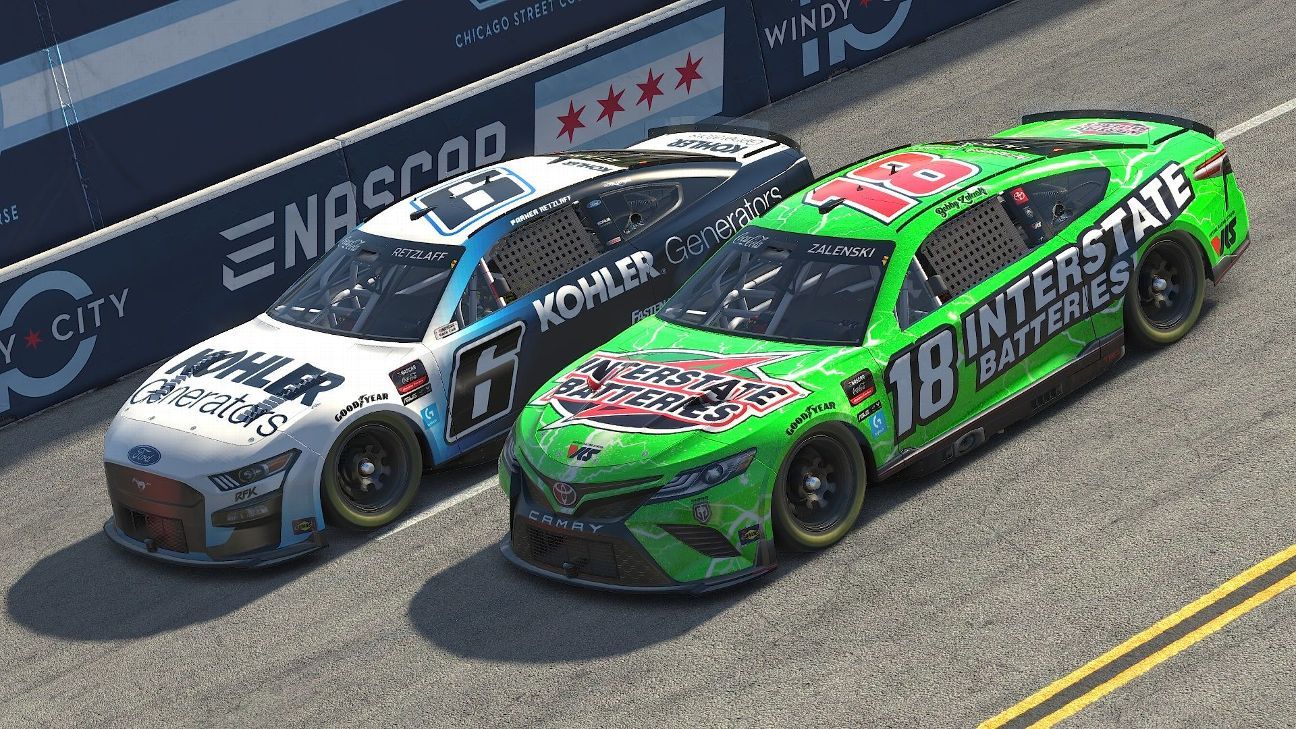“Practice makes perfect.” That’s what you tell yourself when you’re throwing spirals through an old tire, with dreams of the NFL, or shooting pucks against the garage door and imagining hoisting Lord Stanley’s Cup.
How do you get to be perfect, though, if what you need to practice is bending a 3,300-pound stock car to your will? After all, there’s no easy (or legal) way to climb into a NASCAR Cup Series car and race your friends around the neighborhood.
Well, there wasn’t. With the advent of simulator racing, though, that’s changing — and fast.
As anyone who has played with the latest PlayStation or Xbox can attest, video games are more realistic, more lifelike and more immersive than ever. So advanced is today’s gaming hardware that famous titles like Forza and Gran Turismo can accurately replicate the experience of racing real cars on real racetracks.
– Watch Formula One and the W Series all season long on ESPN
– Don’t have ESPN? Get instant access
If those console franchises open the doors of sim racing to the everyday gamer, PC-only offerings such as iRacing and rFactor 2 go one step further.
“I discovered iRacing just by a simple Google search,” Anthony Alfredo, driver of the Our Motorsports No. 23 Xfinity Series entry, told ESPN. “I ended up getting one of those Logitech wheel-and-pedal sets to play at my desk, and as simple as that, for a couple hundred dollars, I was sim racing.”
iRacing is arguably the biggest name in the ever-expanding world of sim racing. It’s said to boast 225,000 active subscribers, including drivers from practically every major racing series in the world: NASCAR, Formula One, IndyCar and several others. McLaren driver Lando Norris has long been found loitering in iRacing lobbies, and 2021 F1 champion Max Verstappen as well as 2005 and 2006 champion Fernando Alonso have been spotted in its races, too.
Rajah Caruth is another with significant sim experience. The 20-year-old is contesting the ARCA Menards Series with Rev Racing in 2022, and he’s participating in select Camping World Truck Series events with Spire Motorsports and a limited Xfinity Series schedule with Alpha Prime Racing.
And it’s through iRacing that he got here.
“NASCAR is where I wanted to race, and I just wanted to race in real life since I was a little kid, and so the only way to do that, I thought, was through racing online,” Caruth told ESPN. “It was never about racing online for the sake of it, like that was never my goal starting out on iRacing, but I knew it was a gateway to start racing.”
It’s more than a gateway, though. iRacing is so realistic that the company worked with NASCAR to develop new circuits like the quarter-mile track used at the L.A. Coliseum in February and the Chicago road course that will debut next July. Sim racing has become an invaluable development tool — for drivers, teams and the sport as a whole.
The trend across motorsports around the world in the past two decades has been a steady decline in testing time and practice sessions. This keeps costs down — in theory, at least — and ensures that audiences are treated to more on-track action with something at stake, whether that be added heat races or more-elaborate qualifying sessions.
“I’m a NASCAR Cup Series driver, one of 40 in the world, and since I only ran half the season in 2020 in Xfinity, I still hadn’t been to a lot of these tracks,” Alfredo said. “I think back to one of them, Sonoma, it’s a road course, and I take the green flag and I’d never even seen the place. So that’s where the simulator was more beneficial than ever before. I’ve never seen it play such a big role in my career.”
During the course of our conversation, Caruth opened up Virtual Racing School, an online tool that catalogs your every move in iRacing and offers detailed telemetry (which he says he often compares with real-world teammates for additional insights) and driver coaching, and begins to list the amount of time he’s spent in various different cars driving several different circuits in recent days.
“I’ve driven an hour and a half in the past day at Watkins Glen … because we go there in a couple weeks,” Caruth said, “and I’ve done an hour and a half in the past two days in Michigan, because that’s my next race in ARCA.”
Alfredo said that, on average, most drivers in NASCAR will do about 10 hours of work in the simulator each week. Some, especially on big teams equipped with custom sim rigs developed by automakers such as Ford, Chevrolet or Toyota, will spend even more time behind the virtual wheel.
What the biggest teams in NASCAR can offer are multimillion-dollar pieces of equipment, the result of years of research and development paid for by some of the largest automotive manufacturers in the world. And while there is no doubting the untold precision and finesse of those simulators, at their core, what they offer are the same sensations that you’ll find in the setups costing tens of thousands of dollars in various drivers’ homes and the entry-level $300 wheel-and-pedal sets available at any electronics retailer.
And that’s a through line, from video game to prime time, you won’t find anywhere else in sports.
“I think just coming from sim racing and becoming a real-world driver, it’s pretty cool to say that I built my first computer at 12 years old, and that was the first computer I started sim racing on. And from racing on my computer, I went to competing at the Daytona 500, just a handful of years later,” Alfredo said. “That’s pretty crazy, because you don’t hear of anyone playing Madden and then becoming the quarterback of a Super Bowl team.”
